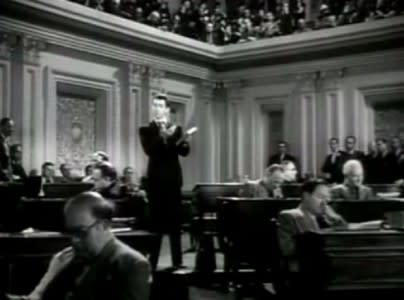Looking at Harry Reid’s statement about filibusters and the Constitution
In the latest Senate squabble over the fate of the filibuster, Majority Leader Harry Reid said earlier this week that the filibuster itself isn’t in the Constitution and the nation can operate without it. But what is the history behind Reid’s statement?
“The Founding Fathers never had any place in the Constitution about filibusters or extended debate,” Reid told reporters on Tuesday. “This country operated fairly well for 140 years without filibuster protection.”
In fairness to Reid, on its face that claim seems to be true, but also in fairness to the filibuster’s supporters, the Founders did leave room for Congress to create its own rules, which included the Senate’s inadvertent filibuster creation in 1806.
In today’s debate, Reid is exploring what is called the constitutional or nuclear option, which is a procedural tactic to eliminate the filibuster during the current session of Congress.
The Senate’s filibuster requirement dictates that at least 60 Senators must vote in favor of moving discussion about matters to a vote. This “cloture” vote sets a limit on debate time, and basically guarantees a motion will get voted on.
So a block of 41 Senators, if it chooses, can stop many procedures from happening.
The current fight between Democrats and Republicans is about a vote for three nominees to the influential D.C. Circuit Court of Appeals, which is seen as a stepping stone to the Supreme Court. It is also considered the nation’s second most-powerful court since it has jurisdiction over regulatory matters.
There are currently four judges from each party on the Appeals Court, so the addition of three Obama nominees raises concerns among Republicans.
To address the first part of Reid’s statement, about the Framers and the filibuster, we looked at Catherine Fisk and Erwin Chemerinsky’s 1997 Duke Law article about the history of the filibuster, and Gregory Koger’s book, “Filibustering: A Political History of Obstruction in the House and Senate.”
In Fisk and Chemerinsky’s research, there is evidence of delaying tactics in the Senate in a 1790 debate over whether Congress should be located in Philadelphia. There is also evidence that Thomas Jefferson and others frowned on the use of delaying tactics in congressional procedures and the rules used by Congress at the time, proposed by Jefferson, said that, “no one is to talk impertinently, or beside the question, superfluously or tediously.”
But that didn’t mean the House and Senate members didn’t take part in delaying votes or from making long-winded speeches.
The filibuster itself didn’t become a reality until 1805, in an odd footnote in Senate history.
Political scientist Sarah Binder testified before the Senate in 2010 about the origin of the filibuster, with its Founding Father as the outgoing Vice President, Aaron Burr.
Binder said Burr told the Senate in 1805 that it should eliminate a rule that automatically cut off floor debate, called the previous question motion, because he thought it wasn’t needed.
“So when Aaron Burr said ‘get rid of the previous question motion,’ the Senate didn’t think twice. When they met in 1806, they dropped the motion from the Senate rule book,” she said.
The first Senate filibuster took place in 1837, so it took the Senate about 31 years to refine the procedure. But the name “filibuster” wasn’t used to describe the tactic until 1863 in the Senate. (The House gave up officially on the filibuster as a procedural move a long time ago.)
So to address Reid’s first point, there seems to be evidence that procedural delays weren’t seen in a positive light by the Founders, but it was a Congress in session just 16 years after the First Congress that made the filibuster a reality.
As for his second statement, we are not quite sure what Reid meant by saying the country, “operated fairly well for 140 years without filibuster protection.”
If one uses 1789 as the starting date for the current U.S. government, that would point to a significant event in filibuster history in 1929. The most significant event in that era happened in 1917, when the Senate adopted Rule 22, which allowed for a cloture vote involving two-thirds of the Senate. (Before then, the Senate allowed a member to hold the floor for an unlimited time.)
Instead, if one counts back 140 years from today, to the year of 1873, there was a lot of filibustering going on, but not a significant rules change to the filibuster.
In his book, Gregory Koger says there were 56 filibusters during the Civil War and Reconstruction era between 1861 and 1877.
So again, we are not quite sure what Reid means with his “140 years statement,” if that is an accurate quote (it has been widely reported by various media sources).
Whether the federal government has operated well for any 140 year period is another topic that is open for debate—hopefully, without a filibuster involved.
Recent Historical Stories
10 interesting websites about the Kennedy assassination
JFK’s warnings about television, money and politics ring true today



